#walther bernhard
Explore tagged Tumblr posts
Text

Walther doodle
33 notes
·
View notes
Photo

walther is so loved. i adore his relationship with raligon and hippolyta, where rali is like a sweet older brother and lyta is like a very fierce and scary older sister... he’s so baby. english doesn’t have honorifics but i imagine walther calling rali and lyta with respectful, but specifically affectionate honorifics for older people <3

#mas is kind of like. hyung. like nii-san? and mbak means noona/noonim or something like aneki in jp#mas/mbak can be affectionate depending on how close you are to the other person. hyung/noona is also more affectionate (less formal)#IDK HOW TO PUT IT IN WORDS IN ENGLISH SORRY#but yeah. walther baby.#walther bernhard#loh walther#lord of heroes walther#raligon esteria#loh raligon#lord of heroes raligon#loh hippolyta#hippolyta#lord of heroes hippolyta#lord of heroes#my art#roohi#tyrant war
47 notes
·
View notes
Text

Luftwaffe Ritterkreuz mit Eichenlaub (Knight's Cross with Oak Leaves) award ceremony at the Berghof, 4 April 1944. L-R: 68 victory ace (67 at night) Oberst Werner Streib, 301 victory ace Major Gerhard Gerd Barkhorn, Generalmajor Erich Walther (he and his Fallschirmjäger regiment defended Monte Cassino), 112 victory ace (including 14 four engined bombers) Oberstleutnant Kurt Bühligen, 50 victory ace (31 at night) Oberstleutnant Hans-Joachim Jabs, Oberstleutnant Bernhard Jope (a medium and heavy bomber pilot who took part in sinking the Italian battleship Roma using Fritz X radio controlled guided bombs on 9 September 1943), 109 victory ace (9 with the Legion Condor) Major Reinhard Seiler, Adolf Hitler, 352 victory ace Major Erich Hartmann (blocked by Hitler), 166 victory ace Major Horst Ademeit (MIA 7 August 1944), 133 victory ace Major Johannes Wiese (including 50 IL-2 ground attack aircraft), Wachtmeister Fritz Petersen (air defense commander/flak), Major Doktor Maximilian Otte (a Junkers Ju 87 Stuka pilot with 1,179 combat missions who was KIA 20 May 1944 by Soviet flak during the First Jassy-Kishinev Offensive), 197 victory ace Hauptmann Walter Krupinski. Krupinski was one of the first to fly the Messerschmitt Me 262 jet fighter into combat, claiming 2 kills in April 1945 as a member of JV 44 led by 104 victory ace Generalleutnant Adolf Galland
#germany#ww2#luftwaffe#adolf hitler#werner streib#gerd barkhorn#erich walther#kurt bühligen#hans joachim jabs#bernhard jope#reinhard seiler#erich hartmann#horst adameit#johannes weise#walter krupinski#fritz petersen#maximilian otte#adolf galland#knights cross#jv 44#the berghof#1944
42 notes
·
View notes
Text
Miss Fisher’s Murder Mysteries really did a pretty spectacular job with their German characters - the conflict, while centred around a world war and everything, is tragic and nuanced and neither side is demonised! And the actress playing elderly Mrs. Vogt is doing a really solid accent, not at all over the top for once! And her son’s German is a valiant attempt, but miles away from a native speaker’s - and the show adresses that! He’s second-generation and “was always worse [at German] than [his] brother”! And the language is included as something not only worth learning, but in the context of poetry - love poetry at that! And Rilke! And *that* Rilke! Death on the Vine has my whole heart just for that.
But they also fall into that exact same trap that almost every anglo production falls into with German characters - the names are??? way too Scandinavian??? Like the father’s name is Michael, which is excellent! That is super common... but his wife pronounces it [ˈmîːkaɛl], “Mee-ka-ale”, which, no. No. That’s just... Swedish. Look, I get it, “ch” is hard for English speakers, but then just call him “Thomas” or “Johann” - they’re just as common, and have neither the difficult “ch” sound nor an “r” (which is usually a dead giveaway, I can count the native English speakers I know who can approximate a German “r”-sound on one hand). You can get away with “Oskar” and “Ida” just fine, they’re common enough - but also suspiciously common in Scandinavia. And then there’s “Erik”. I’d be perfectly willing to be generous and say his parents just anglicised the German variant “Erich” (which, again, would probably be a monster to pronounce for an Australian actor, even though the name would be *just* the ticket popularity-wise). They appear to have anglicised their last name from “Vogt” to “Voigt” (the mother introduces herself as “Ida Vogt”, even though she seems to be *listed* as “Ida Voigt”? Rather confusing). But then his name would be spelled “Eric”, right?
It’s not as egregious as “Dark” and “1899″ - I spent the first ep of Dark convinced the show was set in Sweden or Norway because the names were so off - but it just. It *bothers* me. (Largely because I instinctly always think that the popularity of Scandinavian names in Germany was a leftover Nazi thing - even though turns out that’s just one of those weird misconceptions that a lot of people have. There is apparently quite clear evidence that it’s not true.) But also in this case because it’s geographically off - these Nordic names are very common in *northern* Germany, but the Vogt family is from the Rhineland, which is emphatically not considered northern. It’s not impossible! But not the obvious choice nonetheless, and this keeps happening! It’s so unimaginative, we have so many stupid names to choose from! I get that “Heinrich” and “Friedrich” are dicey if you don’t have a native speaker on your hands, but... With a British accent, “Horst” seems quite doable, and it sounds kinda funny - at least a good bit more foreign than Eric. Same goes for “Dieter”, “Bernhard”, “Walther”, “Udo”, “Hermann”, “Josef”, all old-timey and strong 20th century vibes, and very common. (And honestly, just go with “Peter”, “Arnold” or “Martin”, they’re pronounced slightly differently than the English variant but you’d have absolutely no trouble teaching them to an actor.) Plus, Nathan Page did quite a beautiful job with Rilke’s first name, so for second generation, “Rainer” could be a contender! (And speaking of Rilke, if you want a northern German name so badly, go with “Malte” just once! Change it up!)
Ida doesn’t nearly grate as much - old-timey female names in German are often hard to pronounce (”Hildegard”, “Annegret”, “Margarete” etc. have the bingo of the ‘r’ sound and the consonant clusters, “Ulrike”, “Irene” etc. have that really conspicuous “r” in the middle as well, and I feel like even easier names like “Louise” can be deceptively difficult to get right). But in the first half of the 20th century, you can get away *brilliantly* with short forms! “Anni”, “Emmi”, “Leni”, “Lene”, “Lotte”, “Hilde” - feels very lived-in, and simple enough to pronounce!
tldr; I love Death on the Vine but for the love of god stop naming every German character Erik.
#miss fisher's murder mysteries#mfmm#death on the vine#this is a pet peeve of mine sorry#but i do love this episode so dearly!#first of all because it's just good; it's spooky and tense and tragic and the phryne/jack hits the perfect ratio of angsty to flirty#but also!! because the germans!!! aren't shouting!! no the only german we hear is one of the loveliest poems i've ever read#and a son calling to his mother </3#you don't understand!! how starved I am!! of international content where the germans aren't yelling!#and where they aren't cold calculating nazi/ scientist/ nazi scientist types#in fact they hit a type of reserve and emotion and melancholy that feels so quintessentially *right*#especially for that period!#i love this show so much#(which is why i'm holding them up to such a high standard. so before anyone yells at me about how their grandpa was named Erik tho:#the names are fine! It's just weird that 70% of German characters who are not openly nazis appear to be named Erik.)#i'm a language nerd#german#Rainer Maria Rilke
15 notes
·
View notes
Text

6/14/24: r/SketchDaily theme, "Free Draw Friday." This week's characters from my anthro WWII storyline are Bernhard and Tanja Dannecker, younger siblings of Margarethe and Christof Dannecker, children of Else Dannecker, stepchildren of Ernst Dannecker. (I haven't drawn Else's unnamed/deceased first husband yet.) I don't know much about them as they and Else are estranged from Gret throughout most of the story; only Christof shows Gret any sympathy for what she went through. There'll be more about them later in my art Tumblr and Toyhou.se.
Regarding their design, they're white Pomeranians.
TUMBLR EDIT: I'm not 100% certain but I estimate that Christof is maybe two years younger than Gret; Bernhard is two years younger than Christof; and Tanja is a year younger than Bernhard. Thus one reason they all look around the same age in my art, despite Gret being around 20 or so, meaning Bernhard and Tanja would be around 16 and 15 in this art. (Their father was a poor, low-ranking member of the Wehrmacht and Nazi Party--cannon fodder, Ernst Dannecker calls him, even though he was once such a soldier himself in the Great War--who was killed on the Eastern Front pretty early on. Else's children were born in relatively quick succession, and in one adult WIP I make passing mention that there were a few miscarriages and a stillbirth in among them.) Another reason they all look the same age is that they're purebred Pomeranians--compare them to their mother, who also looks the same. (Whenever I draw their biological father, he too will look the same.) They're all relatively petite in size--people keep mistaking 5' tall Gret for a child when she's full grown--and so always look pretty youthful compared to the Danneckers, who are purebred Siberian huskies (and are pretty tall in general, Walther isn't as tall as his son but he and Margit are both taller than average and I estimate Dannecker himself is probably around 6'4").
The rest of this will be truncated in Tanja's entry to save repetition.
Please see Bernhard's entry for more info on these characters.
[Tanja Dannecker 2024 [Friday, June 14, 2024, 12:00:27 AM]]
[TUMBLR NOTE: Had to fudge her posting date again, the entry order on the blog main page changed. I wish Tumblr entry order would be fixed or at least be consistent.]
0 notes
Text
More about Oskar Fischinger
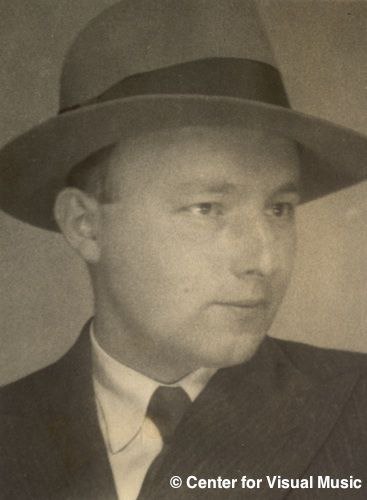
Oskar Fischinger was born on the summer solstice in 1900 in Gelnhausen, Germany. He originally chose music as a career, studying violin and organ building (which attracted him because it combined precise knowledge of technical processes with mathematical harmonic theory) before 1914. Too young and unhealthy for war duty, he was trained in drafting, tool design, and engineering. Around 1920 in Frankfurt, he met Dr. Bernhard Diebold at a literary club. Seeing Fischinger's abstract scroll sketches, Diebold urged Oskar to take up abstract filmmaking. In April 1921, Fischinger was thrilled by the first performance of Walther Ruttmann's Lichtspiel Opus 1 (an abstract film with a live musical score) and vowed to devote himself to absolute cinema, which could best combine his skills in music and graphic art. He resigned his engineer's job and moved to Munich to become a full-time filmmaker. His first film experiments, made in the early 1920s, are among his most radical. In Wax Experiments and Spirals Fischinger designed visual patterns of extreme complexity which often develop in overlapping cycles, yet he interrupts these patterns with radical editing of single frames of contrasting imagery. Among Fischinger's form-breaking experiments of the era were the abstract multiple-projector performances (under the concept name of Raumlichtmusik or Raumlichtkunst with individual performances named Fieber, and Macht (and possibly other names). These were performed c. 1926-1927 using up to five film projectors and several slide projectors.
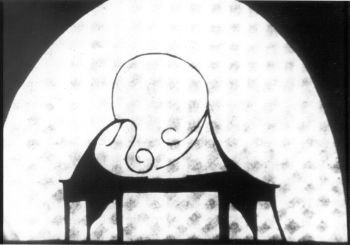
Early in his film-making career, Fischinger established a pattern of alternating commercial work with personal, experimental film-making. While it seems clear that he preferred working in an avant-garde way, commercial work afforded both income and access to the most advanced technology, and Oskar was, among all of the radical film-makers of the Twenties, the most technically knowledgeable and adventurous. Oskar supported himself during this period by making conventional animation, which demonstrates his mastery of realistic anatomy, perspective, and conventional story-telling. But his personal film Spiritual Constructions shows the same radical consciousness and experimental techniques as his abstract films: the slender tale of two drunks who argue and stagger home becomes an epic voyage of warping shapes and thwarted perceptions.
During the summer of 1927 he walked from Munich to Berlin, recording his journey in single-frame exposures - a premonition of the diary films two generations later. He was hired to make special effects of rockets, starscapes and planet surfaces for Fritz Lang's 1929 science-fiction feature Woman in the Moon. When he broke his ankle on the set, he began drawing animations on white paper in charcoal while recuperating, which led to his remarkable series of Studies, comprised of 14 short black-and-white film experiments tightly synchronized to music. A few of the later Studies were drawn by his brother Hans, most likely under Oskar's supervision.
In each of the Studies he set out to solve a different visual problem: in Studie Nr. 6, a flexible aerodynamic movement; in Studie Nr. 7 a deep-space perspective of hard-edged figures contrasted with a flat surface where sensuous art-nouveau shapes metamorphose; in StudieNr. 8 an orchestral multiplicity and density of figures, etc. These Studies screened widely in Europe, Japan and America, and created such demand that by 1932, Fischinger's studio had grown to include his brother Hans, Elfriede (who became his wife in 1933), and three other women. At this time, Fischinger was also pursuing a series of film experiments with drawn synthetic sound (Ornament Sound Experiments).
The close synchronization of the Studies with music (originally begun as ads for recordings, thus direct precursors of the music video) made them immensely popular with audiences worldwide, but after the advent of the Nazi regime, abstract works were classed as degenerate art, and it became more difficult to make any further experimental films.
Fischinger was involved with the development of the three-strip GasparColor film process, a European rival to Technicolor. With his technical training and exceptional understanding of the fundamental processes of cinema, Oskar was one of the very few who mastered this difficult process. The use of three-color film was relatively new in the cinema in the early Thirties, and while in Europe it was still not possible to use three-color film on an entire feature, GasparColor did lend itself to short films that did not require a realistic image. Although "experimentation" was still proscribed, color opened up new venues for Fischinger's animated and abstract works in the field of commercial advertisement - a media-hungry world that thrived on sensation and novelty. Fischinger's 1933-34 film Kreise (Circles) was cleared as an advertising film, but it is essentially abstract imagery, and the ad text only appears in the last few frames. Fischinger then created an animated color advertising film, Muratti Greift Ein (Muratti Marches On), and another color film, Composition in Blue, using small geometrical models. He exhibited the Composition at foreign festivals. The critical and popular success of Muratti Marches On and Composition in Blue attracted a great deal of attention, and Paramount offered Oskar work in America.
Paramount brought Fischinger to Hollywood in February 1936, but did not allow him to continue his work in color film, and his tenure at the studio was short. A grant from The Museum of Non-Objective Painting (Guggenheim Foundation) allowed him to buy his short film Allegretto back from Paramount, and in 1943 he was able to complete it in color as he had originally intended. Fischinger used a cel-layering technique to animate formal visual equivalents of the musical concepts of rhythm, harmony and counterpoint. He implemented a "divisionist" technique of changing colors from frame to frame in order to achieve particularly luminous and chromatic hues that could not be produced by normal methods of animation photography. The film was shown at museums and centers of advanced art all over the world, and Allegretto (1936-43) eventually came to be recognized as one of the most accomplished pieces in the history of visual music.
Fischinger found it extremely difficult to work in studio situations, enduring episodes at Paramount (1936), MGM (1937), and Disney (1938-9). He composed An Optical Poem to Liszt's "Hungarian Rhapsody No. 2" for MGM. He designed the Bach "Toccata and Fugue" sequence for Disney's Fantasia, but quit because his designs were simplified and altered to be more representational. Hilla Rebay, curator of The Museum of Non-Objective Painting, supported Oskar's work during the difficult war years with several grants. Rebay commissioned him to synchronize a film with a Sousa march (to demonstrate loyalty to America; this film was An American March). Oskar then proposed a film without sound in order to demonstrate the artistic validity of non-objective imagery, but Rebay insisted that he make a film to Bach's "Brandenburg Concerto No. 3." While carrying out his commission for Rebay, Oskar discreetly composed the silent masterpiece Radio Dynamics.

Although The Museum of Non-Objective Painting specifically required a cel animation film, Fischinger made his Bach film as a radical documentation of the act of painting, exposing a single frame each time he made a brush stroke. The film parallels the structure of the Bach music without slavish synchronization, and rediscovers some of the playfulness inherent in Bach's sense of formal invention. Although Motion Painting No. 1 won the Grand Prix for Experimental Film at the Brussels International Experimental Film Competition in 1949, Fischinger never again received funding for one of his personal films (only a few ad films in the 1950s). He turned increasingly to oil painting as a creative outlet. During the last twenty years of his life, Fischinger worked on a few commercial projects, several unfinished film and multimedia projects, many unfinished animation drawings, and by the end of his life had completed a substantial body of graphic work including some eight hundred paintings. Oskar Fischinger died on January 31, 1967.
His films continue to be included in exhibitions at major museums and cultural institutions worldwide, recently at the Whitney Museum, New York; the Guggenheim Museum, NY; Centre Pompidou, Metz; Tate Modern, London; MoCA, Los Angeles; the Hirshhorn Museum, Washington DC; Reykjavik Art Museum; Barbican Centre, London; Lentos Kuntsmuseum, Linz; ICC Tokyo, Daelim Museum, Seoul, and many others internationally.
0 notes
Text
69 followers special

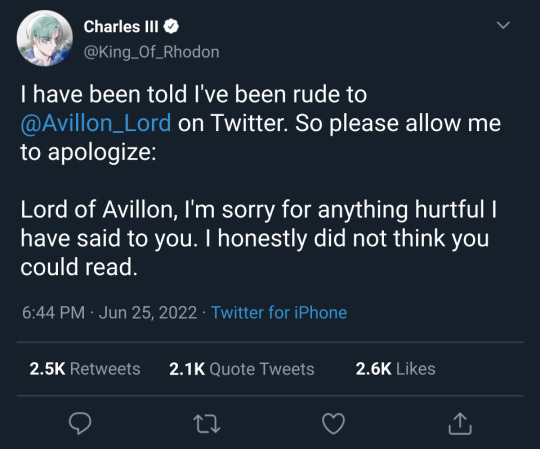


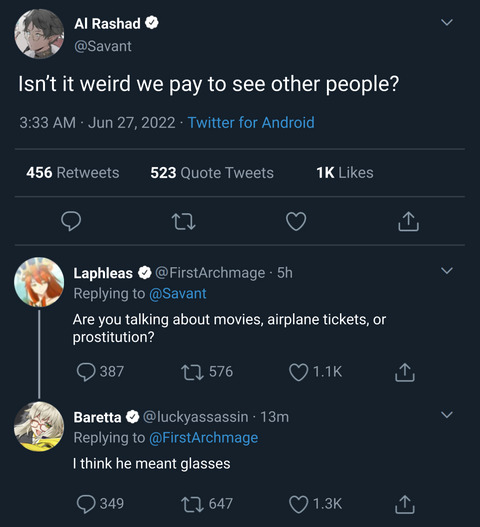
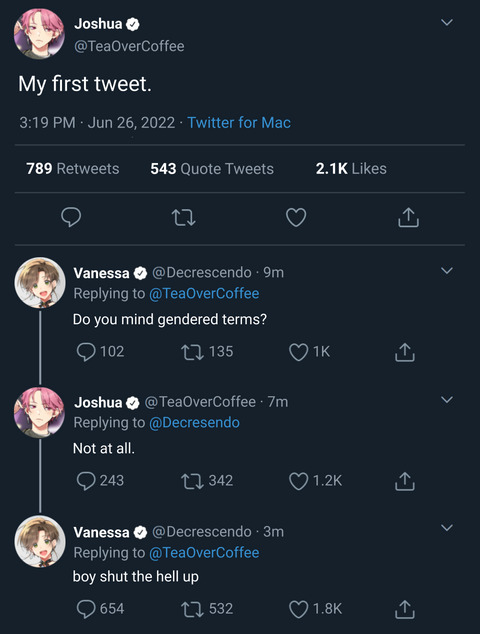

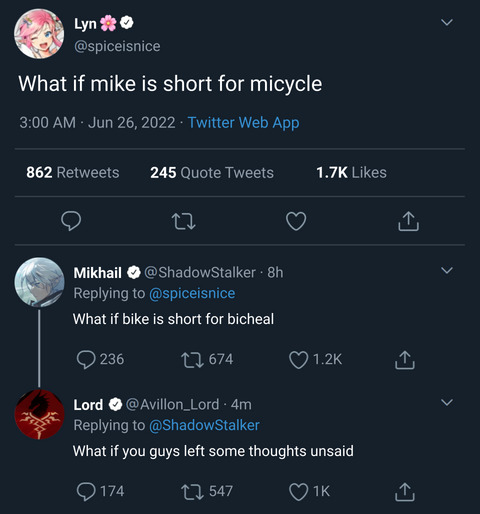

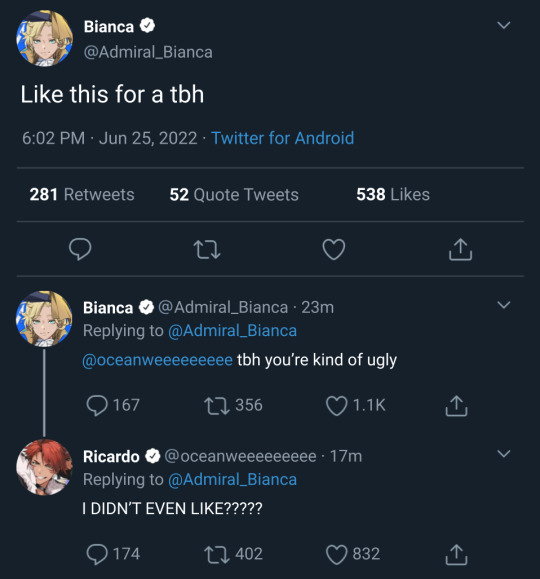
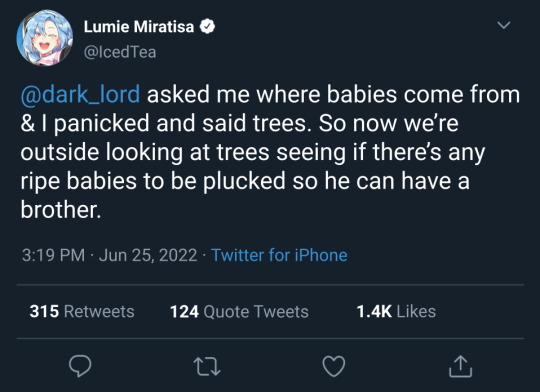
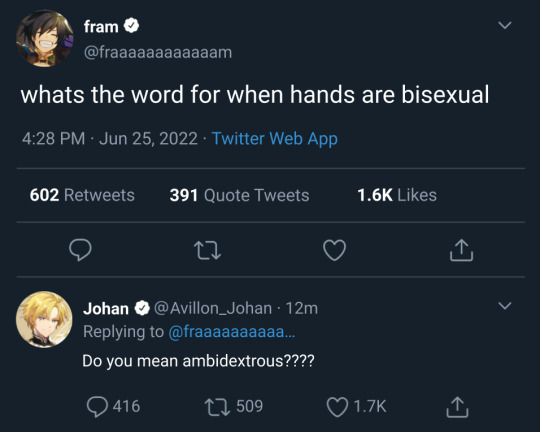
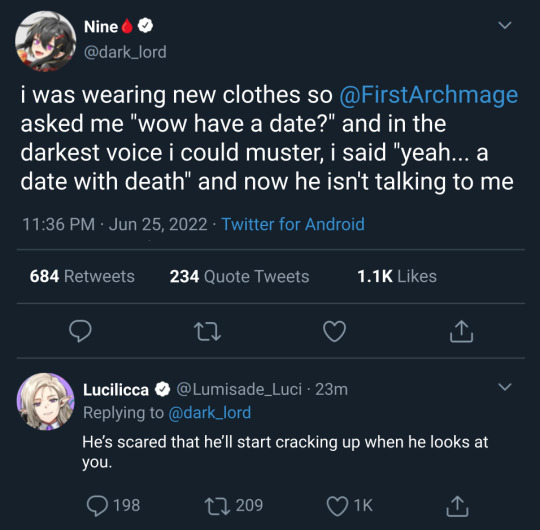
I wanted to feature every LOH character but I spent two weeks on this and got tired.... I edited each one of these from scratch...
Anyways, tysm for 69 followers! We’re 0.000069% to 1 million
#LOH#Lord of Heroes#memes#r/nonpoliticaltwitter#lucilicca la'elaya#nine#johan talede#fram berge#lumie miratisa#Ricardo Caleccia#Bianca Devicci#Rosanna Devicci#Walther Bernhard#helga schmitt#mikhail blake#Lyn blake#Charlotte Grace#Schneider#Vanessa Thérèse Alderune#Joshua Levinth#al Rashad#Laphlaes Selkena#baretta#Alev Valcarios#aslan valcarios#Kartis Claudith#Cesaire Alteon#Charles III#Solphi Lebenheit
200 notes
·
View notes
Text

85 notes
·
View notes
Photo

hope this explains the senior heroes well lmao
#YES THE MEMES. THEY'RE STILL COMING#Lord of Heroes#LoH#Aslan Valcarios#Walther Bernhard#Helga Schmitt#shitpost
167 notes
·
View notes
Text


im practicing drawing back muscles from random stockphotos, but my brain said make it lord of heroes men
#joshu ur so pale damn#loh joshua#lord of heroes joshua#joshua levinth#lord of heroes walther#loh walther#walther bernhard#lord of heroes#roohi#my art
11 notes
·
View notes
Text

Roaming the Mineral-Rich Southern Lunar Terrain // Alien_Enthusiast
Read below the cut for some info about which craters are featured and a map to help identify them!
In birth order of their eponyms:
Purbach crater is named after Austrian astronomer Georg von Peuerbach (1423-1461) who aimed at making astronomy accessible for the average European during the Renaissance with his textbook, Theoricae Novae Planetarum.
Walther crater is named after the German merchant Bernhard Walther (1430-1504) who was a noted observer of the motions of the planets.
Regiomontanus crater is named after German mathematician Johannes Müller von Königsberg (1436-1476) who helped develop the heliocentric theory of the solar system with trigonometry.
Orontius crater is named after the French mathematician Oronce Finé (1494-1555) who published an astronomy textbook De mundi sphaera which guided readers on the use of equipment and proper astronomy methods.
Nonius crater is named for Pedro Nunes (1502-1578), a Portuguese mathematician who used trigonometry to make improvements to the geocentric model of the solar system.
Hell crater is not named after the land of Satan, but instead is named after Hungarian astronomer Maximilian Hell (1720-1792) who was the director of the Vienna Observatory and observed the 1769 transit of Venus.
Lexell crater is named after the Finnish astronomer Andres Johan Lexell (1740-1784), a prolific member of the Russian Academy of Sciences who made important discoveries in celestial mechanics. He was the first to prove that Uranus was a planet rather than a comet.
Miller crater is named after William Allen Miller (1817-1870), a British chemist who aided William Huggins in studying the spectra of astronomical objects, primarily stars.
Huggins crater is named after the British astronomer William Huggins (1824-1910) who pioneered the realm of astronomical spectroscopy, becoming the first to take the spectrum of a planetary nebula.
Bell crater is named after none other than Canadian inventor Alexander Graham Bell (1847-1922) most famous for inventing the telephone, but who also had inventions in aeronautics.
Deslandres crater is named for Henri Alexandre Deslandres (1853-1948), a French astronomer who was the director of the Paris Observatories and carried out studies on the atmosphere of the Sun.

#astronomy#astrophotography#solar system#moon#the moon#luna#lunar surface#crater#lunar crater#history#etymology#nonius#miller#huggins#orontius#walther#lexell#deslandres#hell#bell#regiomontanus#purbach
36 notes
·
View notes
Text
LoH Pride Parade Headcanons
Because this fandom lacks weirdly specific headcanons nobody really felt the need for, and I am too lazy to write a whole FanFiction about this. Some a bit more serious, some just silly. Modern Day AU, of course. Not all characters are here, if you want to add, feel free to! Enjoy!
Rosanna paid good money to get a boat decorated with rainbow colours and have it pulled from a car at the head of the parade. She has a megaphone where she screams colourful insults at anti-LGBTQIA+ people and Walther needs to stand beside her to make sure her anger remains at a manageable level. This is a celebration, Rosanna, please try smiling a bit more instead of being an angry chihuahua...
Aslan and Helga are the two very straight parents that go with their very lesbian daughter Alev because she really wants to, but big crowds and new things make her nervous. While they prepare for the parade (they got her a T-shirt with the lesbian flag! And pins!) Aslan finds out about the father that hugged people at a parade and decides that it’s an AMAZING idea, and gets a “Screw your homophobic dad, I’m your dad now” T-shirt and a “Free Dad Hugs” placard. Helga, after telling him he can’t go around hugging everybody at the parade, gets the exact same T-shirt and placard with “mom” instead of “dad.” They will be dispensing hugs at victims of homophobic parents and wil make Alev cry of joy many times during the day. She is very proud and feels very lucky.
Charles is the closeted gay with a homophobic and bigot family terrified of being found out, hidden under a cap and some big sunglasses and walking pressed like melted cheese in a cheese sandwich between his two very much huge companions Zaira and Krom. They don’t mind, because they both wanted to go and they love him very much (Extreme Mode anybody?), but none of them stopped to think that their own presence there is a dead giveaway that the guy walking between them is, indeed, Charles. Everyone stops to say hi, nobody understands that Charles was trying to hide his identity - it is hot as Hell, he might as well just be trying to defend himself against the sun! Shit will ensue when Astrid photographs him holding hands with Krom.
Speaking about Astrid, she somehow manages to be anywhere in the parade anytime her friends (or enemies, depends how you look at it, Joshua isn’t happy with being called her “friend”) do something cute or funny. She will print out a whole album that she will share with everybody, super proud of her work!
Joshua didn’t want to come but was dragged along and now basically anybody leaves him their bags and water bottles. ESPECIALLY Astrid and Solphi. Happy Pride, lil’ gay baby. He comforts himself looking at hot guys getting their shirt off because it’s too hot - do not judge him, he has been single since forever, ok?
Laphlaes is the parent with the overexcited baby that should be kept on a leash. He has to always hold Nine’s hand to avoid him running up to drag queens to touch their wigs or trying to steal snacks from other kids. Nine would actually prefer to be carried, because he wants to see more of the parade and being short doesn’t help with that, but Laphlaes doesn’t have enough strenght to carry him for so long. Also, while they prepared for the parade, Nine REALLY wanted a cool thematic T-shirt, so he and Laphlaes made one by hand with the colours of the non-binary and the trans flags on - and it says “My dad is also my mom, get over it.” Nine actually wanted it saying something like “Fuck you and your binary-parents” but we don’t shame other people’s gender identities in this house, Nine, and who taught you those words anyway?!
Mei Ling spends the whole pride on Dhurahan’s shoulders. Lairei got Dhurahan a T-shirt that says “Ally supporting the gays” and she finds it hilarious.
#lord of heroes#loh#rosanna devicci#walther bernhard#helga schmitt#aslan valkarios#alev valkarios#charles iii (loh)#krom ledios#zaira (loh)#astrid remond#joshua levinth#laphlaes selkena#nine (loh)#mei ling qiao#dhurahan artikan#lairei yen
39 notes
·
View notes
Text

6/14/24: r/SketchDaily theme, "Free Draw Friday." This week's characters from my anthro WWII storyline are Bernhard and Tanja Dannecker, younger siblings of Margarethe and Christof Dannecker, children of Else Dannecker, stepchildren of Ernst Dannecker. (I haven't drawn Else's unnamed/deceased first husband yet.) I don't know much about them as they and Else are estranged from Gret throughout most of the story; only Christof shows Gret any sympathy for what she went through. There'll be more about them later in my art Tumblr and Toyhou.se.
Regarding their design, they're white Pomeranians.
TUMBLR EDIT: I'm not 100% certain but I estimate that Christof is maybe two years younger than Gret; Bernhard is two years younger than Christof; and Tanja is a year younger than Bernhard. Thus one reason they all look around the same age in my art, despite Gret being around 20 or so, meaning Bernhard and Tanja would be around 16 and 15 in this art. (Their father was a poor, low-ranking member of the Wehrmacht and Nazi Party--cannon fodder, Ernst Dannecker calls him, even though he was once such a soldier himself in the Great War--who was killed on the Eastern Front pretty early on. Else's children were born in relatively quick succession, and in one adult WIP I make passing mention that there were a few miscarriages and a stillbirth in among them.) Another reason they all look the same age is that they're purebred Pomeranians--compare them to their mother, who also looks the same. (Whenever I draw their biological father, he too will look the same.) They're all relatively petite in size--people keep mistaking 5' tall Gret for a child when she's full grown--and so always look pretty youthful compared to the Danneckers, who are purebred Siberian huskies (and are pretty tall in general, Walther isn't as tall as his son but he and Margit are both taller than average and I estimate Dannecker himself is probably around 6'4").
The rest of this will be truncated in Tanja's entry to save repetition.
Not much to say about Bernhard and Tanja, they're more background characters than anything. I've gone over most of the relevant info in the entries of the other family members already linked. (For even deeper info, see also Dannecker's parents, Margit and Walther.)
I never go into detail yet DISTURBING PLOT FOLLOWING, beware.
The gist of it is that Commandant Dannecker marries the widowed, destitute Else solely to gain access to her oldest daughter, Margarethe (about 14-15 at the time), who irrationally reminds him of his own deceased mother, Margit, with whom he'd been engaged in a relationship since adolescence. (His father, Walther, discovered this and sent Ernst off to military academy to break it off, yet WWI broke out, Dannecker went to the front, then came back home all grown up--and now, much stronger and fitter--and ended up murdering his own father so he and his mother could be together. Margit had no hand in this, yet went along with Dannecker afterwards, both out of love and fear. She justified the relationship, BTW, by mentioning how her father justified the same when she was young...hinting that this has been going on for generations.) Dannecker even wonders if his mother (from beyond the grave) sent Gret to be his bride in her place...it's quite messed up. Anyway, he grooms the entire family for a while--lavishing them with gifts and a comfortable lifestyle, making them dependent on him--before starting to abuse Gret much the same way Margit abused him. Gret is also targeted by Josef Diamant, a prisoner in her stepfather's labor camp, who plans to seduce her to help him kill Dannecker before Dannecker can kill him; except Gret decides to go along with this plot willingly. After the deed is done, she tries to contact her mother, yet Else refuses to believe her beloved Ernst would ever do such things; she's forced to acknowledge it's so only when Christof tells her that he witnessed the abuse one night, and then her reaction is to accuse Gret of seducing her husband. She willingly chooses a man who victimized her daughter, and who never even loved her, and disowns Gret.
Christof is the only family member to show Gret any sympathy; he helps her gather some things and go on the run (nearly getting shot by a jittery Diamant in the process), and continues to help provide for her throughout the war; afterward, he's the only one to get back in touch. Else never forgives her for Dannecker's death. And Bernhard and Tanja, who were also spoiled by Dannecker and brainwashed by Else to believe Gret is the bad one, keep their distance as well. (Incidentally, one threat Dannecker uses to keep Gret in line is that he'll do the same to Tanja--which he really has no interest in doing, he has eyes only for Gret--and will imprison her family in his camp. So the entire time, Gret keeps quiet in hopes of protecting the same family that turn their backs on her afterward.)
I don't know if Bernhard or Tanja ever reestablish communication with Gret or not. I'd like them to, but it seems more realistic for them not to. They always knew Dannecker only as a loving and devoted stepfather, and have no reason to doubt their own mother. IRL, it's all too common for victims to not be believed, even by those closest to them, and if I can't get anything else realistic about my story, then I'd like to get the emotions and interpersonal interactions accurate. At least Gret has Christof.
[Bernhard Dannecker 2024 [Friday, June 14, 2024, 12:00:07 AM]]
0 notes
Text
new lore just dropped for helga & walther
stuff i thought was interesting: helga didn’t get along with rozelic & miriande during the WoT,, & walther is 3 years younger than helga!!


#lord of heroes#loh#lord of heroes helga schmitt#lord of heroes walther bernhard#inch resting…#i wonder when we’ll see rozelic & miriande#i don’t remember much about rozelic but i Do remember helga saying miriande had quote unquote A Few Screws Loose
26 notes
·
View notes
Text
"collaborations": art exhibit @ mumok vienna
“collaborations”: art exhibit @ mumok vienna
COLLABORATIONSMumok ViennaJuly 2–November 6, 2022 Departing from the focuses of the Mumok collections on the avant-garde of the 1960s and 1970s as well as conceptual and socio-analytic approaches in contemporary art, the exhibition Collaborations examines diverse strategies of collective authorship. The exhibition builds a bridge spanning from the smallest to the largest unit of togetherness:…

View On WordPress
#Alison Knowles#Andreas Gursky#Anetta Mona Chişa#Anna & Bernhard Blume#Ant Farm#art#Art & Language#arte#Bernadette Corporation#Brigitte Kowanz and Franz Graf#Bruce Conner#Christian Skrein#Christine & Irene Hohenbüchler#Chto Delat#Clegg & Guttmann#Daniel Spoerri#DIE DAMEN#Franz Erhard Walther#Franz Thalmair#Franz West#Friedrich Kiesler#Günter Brus#George Brecht#George Maciunas#Gilbert & George#Haus-Rucker-Co.#Heike Eipeldauer#Heimo Zobernig#Hubert Schmalix#IRWIN
5 notes
·
View notes
Text

Isola fav palettes
#loh#lord of heroes#fanart#isola#helga schmitt#walther bernhard#rosanna devicci#bianca devicci#recardo caleccia
129 notes
·
View notes